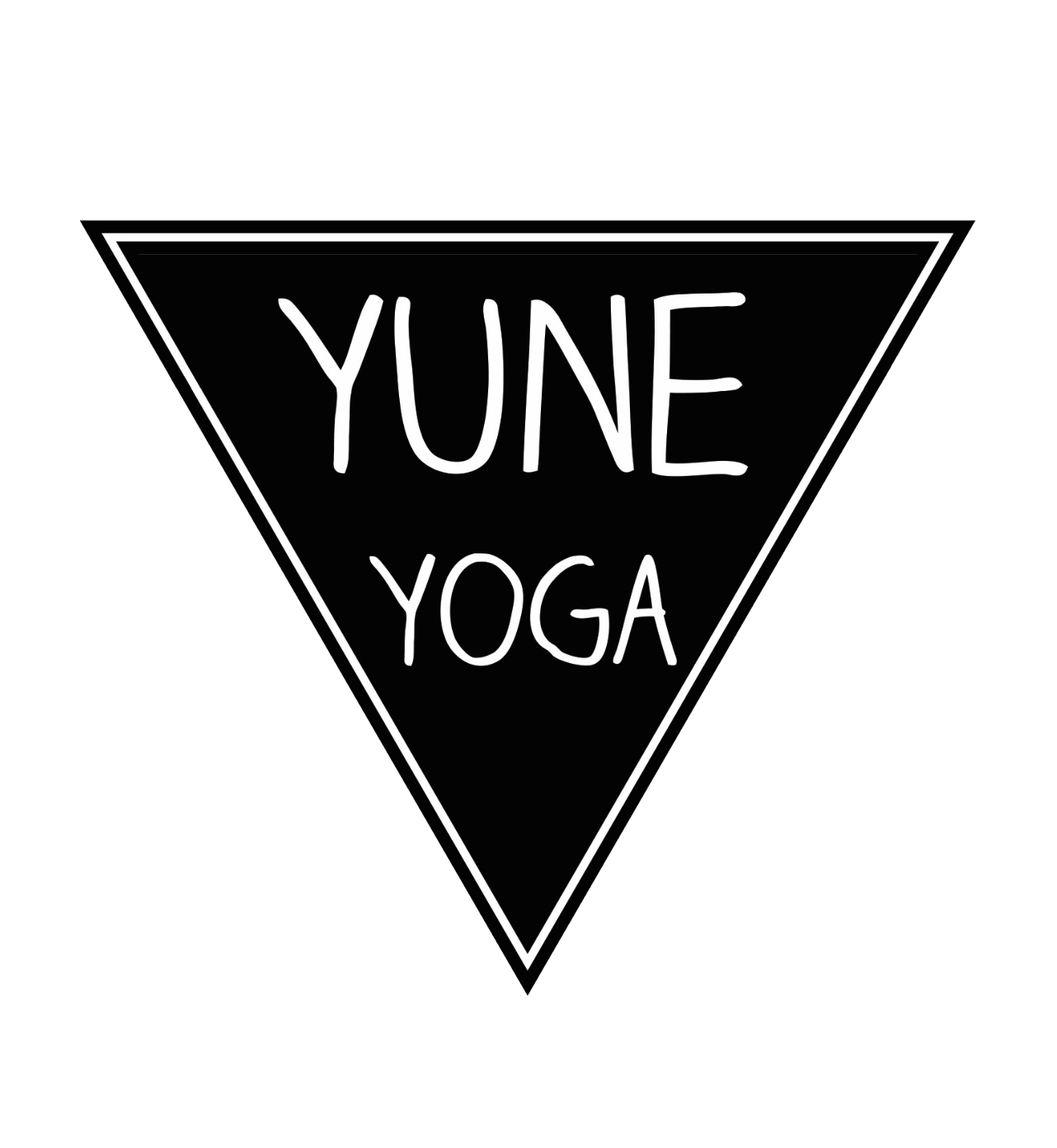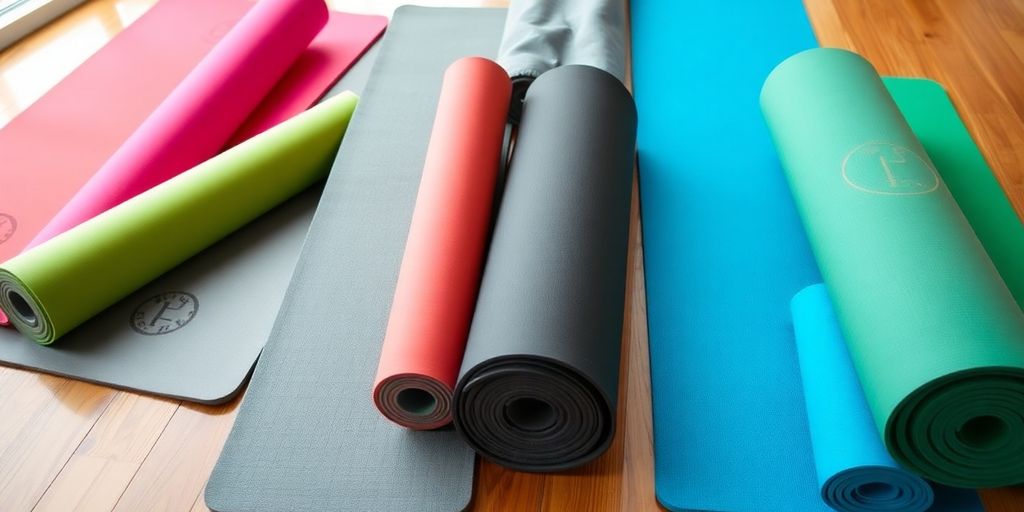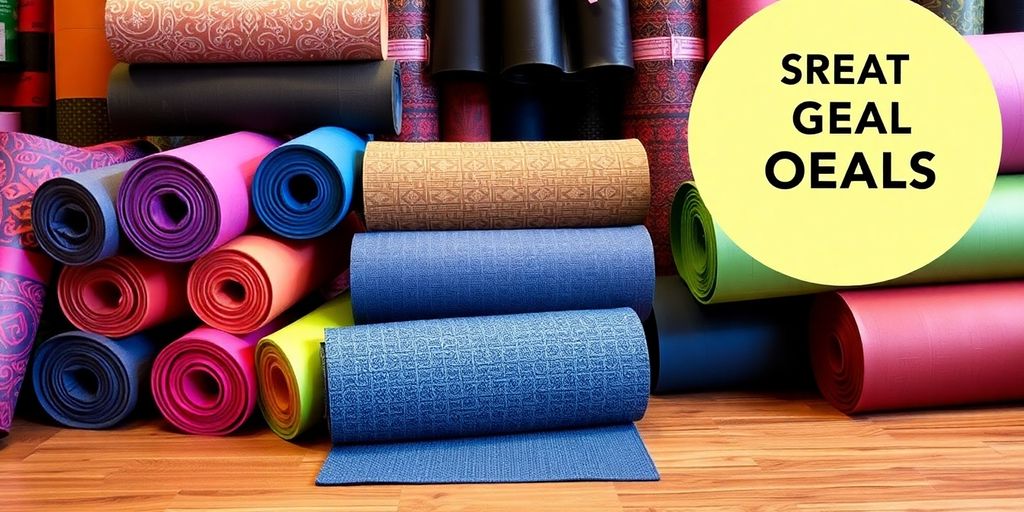
Discover the Benefits of Using a Yoga Pad for Your Practice
Ever tried yoga on a thin, slippery mat? Not fun, right? A yoga pad can seriously change the game for your practice. Whether you're a newbie or a seasoned yogi, a quality yoga pad can make a big difference. From comfort to stability, it’s like having a personal yoga assistant right under your feet. Let's dig into why you might want to give your old mat a break and try out a yoga pad.
Key Takeaways
- A yoga pad offers improved comfort and support during practice.
- Using a yoga pad can help enhance balance and stability.
- Choosing the right yoga pad involves considering material, thickness, and grip.
- A high-quality yoga pad can be a long-term investment in your practice.
- Yoga pads are versatile and can be used for different yoga styles and fitness activities.
Enhance Your Yoga Practice with a Quality Yoga Pad

Experience Greater Comfort and Support
When you roll out a quality yoga pad, you're not just making a space on the floor; you're setting the stage for a more comfortable practice. A good pad provides the cushioning your joints need, especially during those poses where you're putting pressure on your knees or elbows. Say goodbye to the discomfort of hard surfaces and hello to a cushioned, supportive practice.
Improve Your Balance and Stability
Balance poses can be tricky, and the last thing you need is a slippery surface throwing you off. A quality yoga pad offers a stable, non-slip foundation that helps keep your feet and hands firmly planted. This stability is crucial for building confidence in poses like tree pose or warrior III. Plus, it allows you to focus on your alignment rather than worrying about slipping.
Explore New Poses and Sequences
With the right pad, you can push the boundaries of your practice. Whether you're trying out a challenging arm balance or flowing through a new sequence, a supportive yoga pad gives you the freedom to experiment. The right amount of grip and cushioning can make all the difference, helping you to safely explore and expand your yoga repertoire.
Investing in a quality yoga pad is like giving yourself a solid foundation to build upon. It transforms your practice into something more enjoyable and allows you to focus on what truly matters: your growth and journey in yoga.
Choosing the Right Yoga Pad for Your Needs
Consider Material and Durability
Choosing the right yoga pad starts with looking at the material and how long it will last. A good yoga pad should be made from high-quality materials that can withstand regular use. Whether you prefer natural rubber for its eco-friendly properties or a more traditional PVC mat for its durability, it's important to pick a material that aligns with your values and practice style. Some materials offer more cushion, while others provide better grip. Think about how often you practice and in what conditions, as this will influence how quickly the mat wears out.
Check for Non-Slip Features
Safety during yoga is key, and a non-slip pad can be a game-changer. Look for yoga pads with textured surfaces or non-slip backings to keep you steady during challenging poses. A yoga towel can also be a great addition, especially for hot yoga sessions, to prevent slipping from sweat. This feature is especially important if you practice on smooth surfaces or engage in intense workouts.
Evaluate Thickness and Cushioning
The thickness of your yoga pad can greatly affect your comfort and performance. Thicker pads offer more cushioning, which is great for those with sensitive joints or who prefer a softer feel. On the other hand, a thinner pad might provide better stability for balancing poses. Consider what feels best for your body and the type of yoga you practice. If you're someone who travels with your mat, you might also want to consider how portable it is, as thicker mats can be bulkier.
Finding the perfect yoga pad isn't just about aesthetics—it's about enhancing your practice and ensuring you can perform poses safely and comfortably. Take the time to assess your needs and preferences to make an informed decision.
Maximize Your Yoga Experience with a Yoga Pad
Practice Dynamic and Flowing Sequences
Using a yoga pad can really change how you do your yoga. With more room to move, you can easily try out those flowing sequences that keep you moving from one pose to the next. Here's what you gain:
- Boost your strength and flexibility
- Improve your heart health
- Focus better and stay mindful
Experiment with New Poses
Got a yoga pad? Great! Now you can try those tough poses without worrying about falling over. Think about trying:
- Headstands and handstands
- Arm balances like crow pose
- Deep backbends like the wheel pose
The extra space on the pad helps you feel more secure, so you can really push your limits.
Incorporate Props and Accessories
A yoga pad isn't just for standing poses. It opens up a whole new world for using props like blocks and straps. You can:
- Use blocks to help with alignment
- Try straps for deeper stretches
- Mix in other tools to spice up your routine
A good yoga pad can make your practice way more fun and fulfilling. It's like having your own little yoga studio at home, giving you the freedom to explore and grow. Whether you're a newbie or a pro, a yoga pad is a game-changer for your practice.
The Versatility of a Yoga Pad
Ideal for Partner Yoga or Group Exercises
Yoga pads aren't just for solo sessions. They offer ample space for partner yoga or group exercises, allowing for a shared experience. Practicing with others can deepen your connection and make sessions more interactive and fun. Whether you're helping each other with poses or just enjoying the shared energy, a yoga pad can transform your practice into a communal activity.
Suitable for Various Fitness Activities
A yoga pad can be more than just a yoga essential. It's perfect for cross-training, stretching routines, and even family yoga sessions. The extra space allows everyone to join in without feeling cramped. And if you love the outdoors, take your pad to the park for a refreshing yoga session amidst nature.
Adaptable to Different Yoga Styles
Whether you're into Hatha, Vinyasa, or Yin yoga, a yoga pad adapts to all styles. You can try new poses and sequences without worrying about space limitations. The extra room helps prevent injuries by allowing you to move freely and safely, enhancing both comfort and safety during your practice.
Investing in a High-Quality Yoga Pad
Investing in a high-quality yoga pad is more than just a purchase; it's a commitment to your practice. A durable yoga pad withstands the test of time, providing consistent support and performance. Unlike cheaper versions, a quality pad doesn't break down easily, ensuring you get the most out of every session.
- Longevity: High-quality pads are made from robust materials that resist wear and tear, even with frequent use.
- Performance: They maintain their grip and cushioning, essential for poses that require balance and stability.
- Value: Though initially more expensive, they save money in the long run by not needing frequent replacements.
While the upfront cost of a high-quality yoga pad might seem steep, it pays off over time. Consider it an investment in your health and well-being, reducing the need for frequent replacements and saving you money in the long haul.
- Reduced Replacement Costs: High-quality pads last longer, eliminating the need for frequent purchases.
- Enhanced Practice: With better cushioning and grip, you reduce the risk of injury, potentially saving on health-related expenses.
- Sustainability: Investing in durable products promotes less waste, aligning with eco-friendly practices.
Many high-quality yoga pads are crafted with the environment in mind, using sustainable materials that reduce your carbon footprint. Opting for eco-friendly options not only benefits the planet but also provides a healthier practice environment free from harmful chemicals.
- Sustainable Materials: Look for pads made from natural rubber, recycled materials, or biodegradable substances.
- Chemical-Free: Ensure the pad is free from PVC and other harmful toxins.
- Eco-Conscious Brands: Support companies that prioritize sustainability in their manufacturing processes.
Choosing a high-quality yoga pad is about more than just comfort and performance; it's a step towards a more sustainable and mindful practice.
Create a Dedicated Yoga Space with Your Yoga Pad
Creating a dedicated yoga space at home can really help you get into your practice. Having a specific spot for yoga means you can fully dive into your poses and create a peaceful vibe. Here’s how to set up your space:
Define Your Personal Practice Area
- Pick a quiet corner: Choose a spot in your home that’s away from the noise and distractions.
- Use calming elements: Add soft lighting or a few candles to set a relaxing mood.
- Include inspiring decor: Hang up some art or place plants that make you feel good.
Enhance Your Home Yoga Environment
- Personalize your area: Bring in items that motivate you like yoga books or photos.
- Invest in a good mat: A quality mat like the Galatea Yoga Mat can make a huge difference in comfort and support.
- Add props: Consider blocks or straps to help you with poses and stretches.
Encourage Consistent Practice
- Keep it tidy: A clean space is inviting and helps you focus.
- Minimize interruptions: Turn off your phone or any gadgets that could break your concentration.
- Use soothing sounds: Play gentle music or nature sounds to help you relax.
A well-thought-out yoga space can deepen your connection to your practice, helping you focus and grow.
The Importance of a Non-Slip Yoga Pad
Ensure Safety During Practice
When you're deep into a pose, the last thing you want is to worry about slipping. A non-slip yoga mat is essential for maintaining safety during your practice. Whether you're a beginner or a seasoned yogi, ensuring your mat stays put can prevent mishaps. A mat that grips well can make all the difference, especially in poses that require balance and precision.
Enhance Grip and Traction
The grip of your yoga pad is not just about safety; it also enhances your overall practice. A mat with excellent traction allows you to focus on your breathing and posture, rather than worrying about sliding around. With a reliable surface beneath you, transitions between poses become smoother, and you can hold poses longer without discomfort.
Prevent Injuries and Accidents
Injuries in yoga often stem from unexpected slips, especially during challenging sequences. A non-slip pad is crucial in preventing these accidents. It provides a stable foundation, ensuring that your hands and feet stay in place as you move through your practice. This stability is particularly important in styles like hot yoga, where sweat can make surfaces slippery. With the right mat, you can practice confidently, knowing that your safety is prioritized.
Exploring Different Types of Yoga Pads

When it comes to yoga pads, there's a surprising variety out there, each catering to different needs and preferences. Let's take a closer look at some of the options available.
Natural Rubber vs. Eco Mats
Natural rubber mats are a favorite among eco-conscious yogis. They're made from sustainable materials and offer excellent grip, even during the sweatiest sessions. Eco mats, on the other hand, often incorporate materials like TPE or cork, providing a more lightweight and sometimes more affordable alternative. They’re not just kind to the planet but also to your practice, offering the right balance of comfort and durability.
Foldable vs. Traditional Mats
For those on the go, foldable mats are a game-changer. They’re designed to fit easily into a suitcase or backpack, making them perfect for travel. Traditional mats, however, are typically thicker and offer more cushioning, ideal for home practice where portability isn't a concern. Both types have their place, depending on whether flexibility or comfort is your priority.
Specialty Mats for Specific Needs
Some mats are designed with specific practices in mind. For instance, hot yoga mats often feature extra grip and moisture-wicking properties to handle intense sweat. There are also mats with alignment guides printed on them, perfect for beginners or those looking to refine their poses. Additionally, you might find mats with extra cushioning for joint support, catering to those with injuries or sensitivity.
Choosing the right yoga pad is about finding what best supports your practice and lifestyle. With so many options available, there's sure to be a perfect match for everyone.
Wrapping It Up: Why a Yoga Pad is a Game-Changer
So, there you have it. A yoga pad isn't just a piece of gear; it's like your yoga buddy that makes everything better. Whether you're stretching out in your living room or hitting the studio, having that extra cushion and space can really change your practice. It’s like having a little slice of comfort and stability right under you. Plus, it’s great for trying out new poses without worrying about slipping or hurting your joints. And let's be honest, who doesn't want a bit more comfort while working on their downward dog? So, if you haven't already, maybe it's time to roll out a yoga pad and see how it can make your yoga sessions more enjoyable. Happy stretching!
Frequently Asked Questions
What is a yoga pad?
A yoga pad is a soft mat designed to provide cushioning and support during yoga practice. It helps make poses more comfortable and stable.
Why should I use a yoga pad?
Using a yoga pad can increase comfort, improve balance, and provide a non-slip surface for safety during your practice.
How do I choose the right yoga pad?
Consider the material, thickness, and non-slip features. Look for a pad that suits your comfort needs and the type of yoga you practice.
Can a yoga pad be used for other exercises?
Yes, a yoga pad can be used for other fitness activities like Pilates, stretching, or even as a comfortable surface for meditation.
How do I clean my yoga pad?
Most yoga pads can be cleaned with a gentle soap and water solution. Make sure to follow the care instructions provided by the manufacturer.
Is a thicker yoga pad better?
A thicker yoga pad offers more cushioning, which can be great for joint support, but it may affect balance. Choose based on your personal comfort and practice needs.


